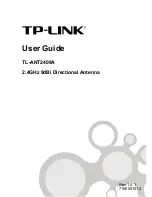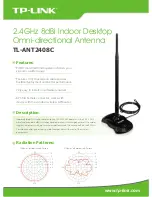
2
GDL 40 Installation Instructions
Mounting the Antenna
You can surface mount the GDL 40 antenna
(
), attach it to a standard marine pole
), or install the antenna under
fiberglass (
Mounting Location
Considerations
To ensure the best reception, keep these
considerations in mind while selecting a
mounting location.
• Mount the antenna in a location that has
a clear, unobstructed view of the sky in
all directions.
• Mount the antenna where it is not
covered by the superstructure of the boat,
a radar device, or a mast
➊
.
• Higher mounting locations provide better
reception.
➎
➍
➌
➊
➋
• Do not install the antenna near sources
of electromagnetic interference (EMI)
➋
,
such as the motor or other large marine
electronics.
• Install the antenna at least 3 ft. (1 m)
away from the path of a radar beam or
VHF radio antenna
➌
.
◦ It is best to install the antenna above
the path of the radar beam
➍
.
◦ It is acceptable to install the antenna
under the path of the radar beam
➎
.
• Install the antenna at least 5.9 in. (15 cm)
from a magnetic compass to avoid
interfering with the compass.
Verifying a Mounting Location
1. Select a mounting location (
2. Temporarily secure the antenna in the
selected location.
3. Test the antenna for correct operation on
the chartplotter.
4. If you experience interference with other
electronics, try a different location.
5. Repeat steps 3 and 4 until you find a
mounting location where the antenna
operates correctly.
After you verify correct operation at the
mounting location, permanently mount the
antenna.
Mounting the Antenna on a
Surface
1. Select a mounting location for the
antenna, and verify correct operation at
the mounting location (
2. Trim the surface-mount template,
and make sure the antenna fits in the
mounting location you selected (
).
3. Remove the protective liner on the back
of the template, and apply the template
to the mounting location.
4. Use a
1
/
8
in. (3.2 mm) bit to drill the
three pilot holes indicated on the
template.
Note:
If you are mounting the antenna
on fiberglass, it is recommended to use
a countersink bit to drill a clearance
counterbore through the top gelcoat
layer (but no deeper). This helps to
avoid cracking in the gelcoat layer when
the screws are tightened.
5. Use a
3
/
8
in. (10 mm) bit to drill a starter
hole for the jigsaw blade, as indicated
on the template.
6. Use a jigsaw to cut the center hole as
indicated on the template.




























